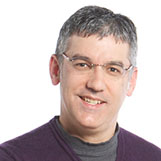| 2022 2021 2020
2019 2018 2017 2016 2015 2014 2013 2012 2011 2010 2009
2008
2007
2006
2005 2004 2003 2002 2001 2000 1999 1998 1997 1996 1995
1994
1993
1992
1991 1990
1989
1988
1987
1986
1985
1984 1983 1982 | Clay Daetwyler Brian Straughn Jesse Anderson
Mark Conners
Lorraine DeSalvo Bonnie Seal-Filiatreau Pauline Rirksopa Tommy Baldwin Mark Conners no awards Jane Zhang Paulina Alejandro Nicholas Hammer Jesse Anderson
Clay Daetwyler
Tuck Owens, Dan Margulies
Robert Dahms Tom Payerle John Cataldi Mary Ridgell Joyce Robinson Margaret Lukomska Tom Payerle Pauline Rirksopa Lorraine DeSalvo Maurice Pairel Loretta Robinette Cassie Jones, Jesse Anderson Dawn Leavell Linda O'Hara, Betty Alexander Bernadine Kozlowski Geoffrey Elbo Pam Solomos, Nono Kusuma Jan Andrews Karl Harzer, Brenda Dunn Rose Otto Pota Floros, Harriet Husman Jean Clement Michele Eastman Elbert Barretta Delores Knight | Rob McIntire Naomi Russo Dannielle Watkins
Samantha Suplee Ayla Hurley Paulina Alejandro Logan Anbinder Donna Hammer Allen Monroe no awards Anne Suplee Xiao Ning Zhao Pauline Rirksopa Bonnie Seal-Filiatreau Doug Bensen, Scott Lasley Loretta Robinette
Aaron McQueen
Kari Aldridge Randy Holder Donna Hammer Sherri Menoes Margaret Lukomska Allen Monroe Al Godinez Tuck Owens Ruth Zerwitz Delores Knight Norman Reese
Betty Alexander
Pauline Rirksopa
Pat Byrdsong
| Josiland Chambers, Naomi Russo, Bonnie Seal-Filiatreau Lea Bartolome, Melanie Knouse, Allen Monroe Melissa Britton, Josiland Chambers, Tom Woycheck-Gleason, Ayla Hurley, Bonnie Seal-Filiatreau Janet Das Sarma, Donna Hammer, Kristin Stenson Heather Markle, Don Lynch, Jane Wang Jessica Crosby, Claudia Key and Kelly Phillips Margaret Lukomska, Naomi Russo and Melissa Britton Eliot Hammer Amy Streets no awards Julie Callis |

